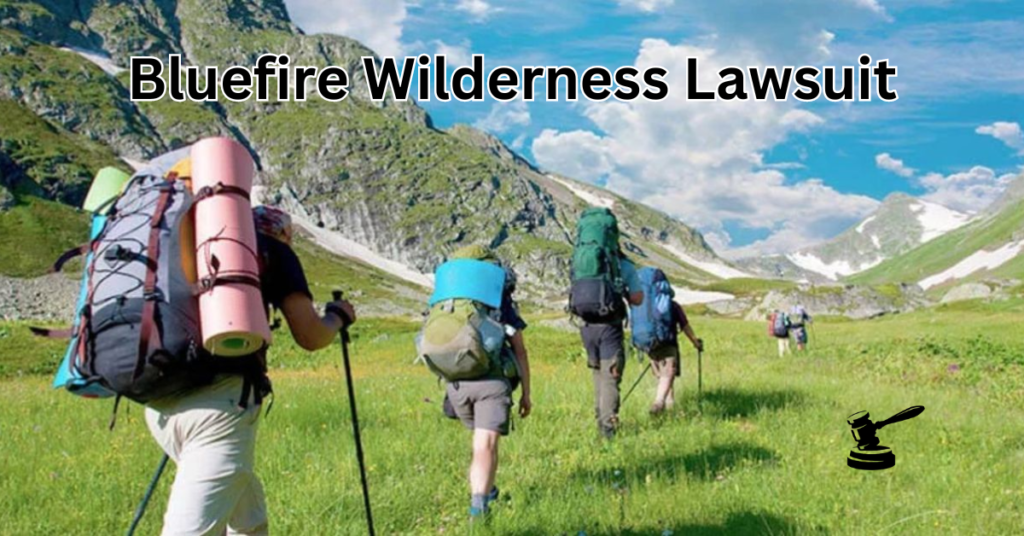The BlueFire Wilderness lawsuit has garnered significant attention in recent years. As a wilderness therapy program designed to help troubled teens, BlueFire Wilderness provides therapeutic services in an outdoor setting. However, lawsuits involving such programs have raised concerns regarding the treatment of participants, safety, and the ethics of wilderness therapy. This article will explore the details of the BlueFire Wilderness lawsuit, the importance of understanding these legal cases, and what they reveal about the broader industry of wilderness therapy.
What is BlueFire Wilderness Therapy?
BlueFire Wilderness is a therapeutic program that uses outdoor experiences to help adolescents struggling with behavioral, emotional, and psychological challenges. These programs typically involve activities like hiking, camping, and group therapy. They are often seen as an alternative to traditional therapy or boarding schools.

Wilderness Therapy Programs
Wilderness therapy programs, like BlueFire, provide structured therapeutic experiences in nature, often focusing on personal responsibility, self-discovery, and teamwork. These programs aim to foster resilience and emotional growth by removing individuals from their everyday environments.
The Lawsuit Against BlueFire Wilderness
The BlueFire Wilderness lawsuit centers around allegations of mistreatment, safety concerns, and failure to adequately care for participants. Parents have claimed that their children experienced physical and emotional harm during the program, leading to lawsuits seeking compensation for damages.
Why Lawsuits in Wilderness Therapy Are Common
Lawsuits are not uncommon in the wilderness therapy industry due to the inherent risks involved in outdoor activities. Accidents, emotional distress, and claims of mistreatment often lead to legal actions against these programs. Critics argue that the unregulated nature of many of these programs contributes to a higher risk of lawsuits.
Importance and Benefits
The Purpose of Wilderness Therapy
Wilderness therapy programs like BlueFire aim to provide a unique form of intervention for teenagers facing significant challenges. These programs are designed to remove participants from the negative influences of their everyday lives and provide an environment where they can focus on their personal development.
Benefits of Wilderness Therapy
Many families turn to wilderness therapy programs because of their reported benefits. These include improved self-esteem, emotional regulation, and the development of healthy coping mechanisms. The structured environment and physical challenges help participants gain new perspectives on their lives and behavior.
Importance of Safety in Wilderness Therapy Programs
While wilderness therapy offers significant benefits, safety must be a top priority. Programs like BlueFire Wilderness must balance therapeutic outcomes with the physical and emotional well-being of participants. When safety protocols are neglected, the risk of harm increases, leading to potential lawsuits.
Applications and Use Cases
Wilderness Therapy as an Intervention for Troubled Teens
Wilderness therapy is often used as a last resort for families dealing with severe health behavioral problems, such as substance abuse, defiance, and mental disorders. Programs like BlueFire Wilderness promise to offer an intensive therapeutic experience that combines nature and clinical treatment.
Success Stories of Wilderness Therapy
There are many success stories associated with wilderness therapy programs. Some teens who attend these programs report life-changing improvements in their mental health and behavior. Families have shared stories of adolescents returning from wilderness therapy with new attitudes, better communication skills, and an improved ability to manage their emotions.
Legal Challenges Faced by Wilderness Therapy Programs
Wilderness therapy programs face unique challenges due to the nature of their treatment. The legal issues often arise from physical injuries during outdoor activities, alleged emotional abuse, and claims of inadequate care. These lawsuits, such as the one against BlueFire, highlight the need for better regulation and oversight in the industry.
Challenges and Solutions
Risks Associated with Wilderness Therapy
Wilderness therapy programs are inherently risky due to the physical and emotional challenges participants face. Outdoor activities such as hiking, rock climbing, and camping can lead to accidents and injuries if proper safety measures aren’t in place. Emotional risks also arise, as the intensive therapeutic environment can be overwhelming for some participants.
Legal and Ethical Concerns
The BlueFire Wilderness lawsuit underscores the legal and ethical concerns surrounding wilderness therapy programs. Parents and guardians may feel that their children are placed in dangerous situations, or that the emotional strain of the program is too much for young participants to handle. These concerns often result in lawsuits, drawing attention to the ethical responsibilities of such programs.
Addressing Safety Concerns
Wilderness therapy programs must have strict safety protocols to reduce the risk of harm. This includes having trained staff, ensuring proper medical care is available, and regularly reviewing safety procedures. Programs should also conduct thorough assessments of each participant’s emotional and physical health before admitting them.
Regulatory Oversight in Wilderness Therapy
The lack of regulation in the wilderness therapy industry is a major concern. Programs often operate with minimal oversight, which can lead to poor safety standards. The BlueFire Wilderness lawsuit has prompted calls for greater regulation to protect participants and ensure programs adhere to high ethical standards.
Solutions for Improving Wilderness Therapy Programs
To prevent legal issues, wilderness therapy programs need to adopt better safety measures, enhance staff training, and ensure transparency with families. Providing clear information about the risks involved and maintaining open communication with parents can help prevent misunderstandings and potential lawsuits.
Conclusion
The BlueFire Wilderness lawsuit has shone a spotlight on the wilderness therapy industry. While these programs offer unique benefits for troubled teens, they also come with risks that need to be carefully managed. The lawsuit highlights the importance of safety, regulation, and transparency in wilderness therapy. Families considering such programs must do their research to understand both the potential benefits and the risks involved.
FAQs
1. What is BlueFire Wilderness?
BlueFire Wilderness is a wilderness therapy program designed for teens with behavioral and emotional challenges. It uses outdoor activities and therapeutic interventions to help participants develop coping mechanisms and improve their mental health.
2. Why was BlueFire Wilderness sued?
BlueFire Wilderness was sued due to allegations of mistreatment, safety concerns, and failure to adequately care for participants. The lawsuit claims that children experienced physical and emotional harm during their time in the program.
3. Are wilderness therapy programs safe?
Wilderness therapy programs can be safe if they follow proper safety protocols. However, the physical and emotional challenges involved carry inherent risks. It’s essential to research each program thoroughly before enrolling a child.
4. What are the benefits of wilderness therapy?
Wilderness therapy can help teens develop self-esteem, emotional regulation, and coping skills. The structured environment and outdoor activities encourage personal growth and reflection, leading to long-term improvements in behavior and mental health.
5. How can wilderness therapy programs reduce the risk of lawsuits?
Programs can reduce the risk of lawsuits by prioritizing safety, conducting thorough assessments of participants, improving staff training, and maintaining open communication with families. Implementing better regulatory oversight can also help protect participants and reduce legal risks.



